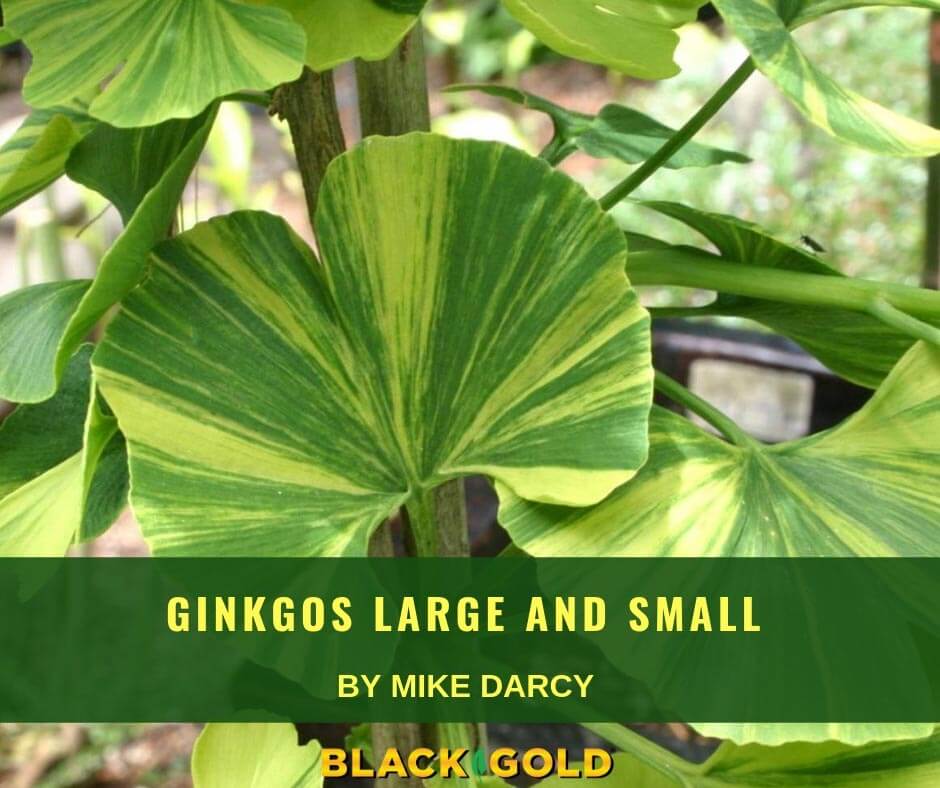
In Portland, Oregon, Ginkgo biloba trees line the streets in an area called Park Blocks. These magnificent trees were planted years ago and today reach a height of perhaps 100 feet. The Ginkgo is an excellent choice for a large street tree when taking into consideration the ultimate growth expected. (Large tree lawns are a must.) They do not seem to be bothered by insects or diseases, are tolerant of air pollution and most soil conditions, and they provide shade in the summer and beautiful golden fall leaf color in the autumn.
Ginkgo History
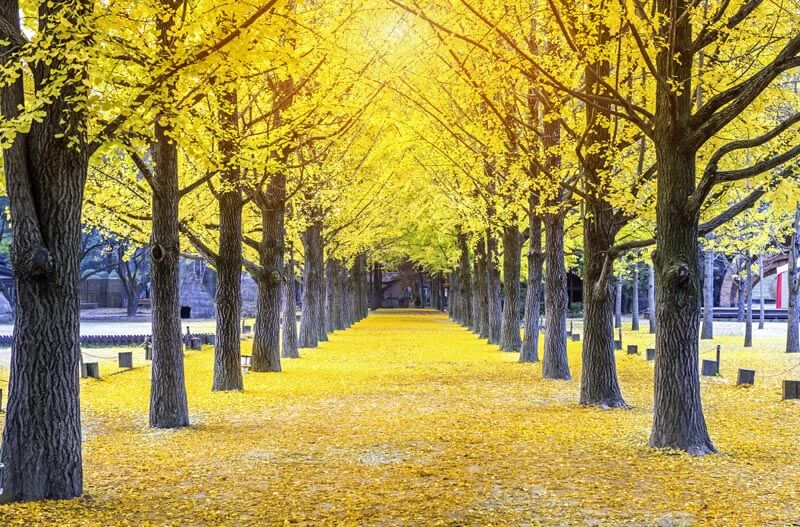
I have long been fascinated by these historic trees and marvel at their survival instincts. Ginkgo fossils exist dating to over 270 million years old. At one time they were thought to have grown worldwide, but presently, remnant populations were found to only exist in China and Japan. Throughout Asia, these trees were revered as fixtures in temple gardens and Buddhist monasteries.
Ginkgo trees are monoecious, a technical term meaning that separate trees have either just male or just female flowers. It may take a tree 20 years or more before the flowers develop. When purchasing a Ginkgo, select male plants, (grafted or grown from cuttings), because female trees produce messy, fleshy, ill-smelling fruit. In Asia, they use the fruits of the female trees for medicinal purposes, but they are not of value to most homeowners.
Ginkgo Size
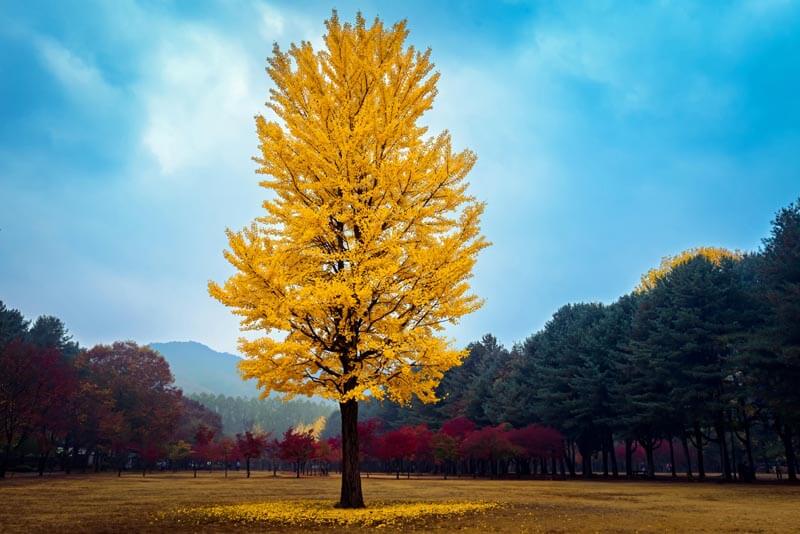
There are several lovely large- to medium-sized ginkgo varieties. Most have been chosen for their unique, appealing growth habits in addition to robust growth and vigor. Those used as landscape trees are always seedless males. Two of the better available selections include the narrowly columnar ‘Princeton Sentry’, which only reaches 40 feet by 15 feet, and the excellent street tree ‘Magyar’, which reaches 50 feet x 25 feet and has a narrowly pyramidal shape with branches that curve upwards.
In my garden, I do not have space for a 100-foot or even a 40-foot tree. Most homeowners do not. However, due to recent ginkgo introductions, there are some cultivars that I can and do grow. Sometimes these are sold as being compact or “dwarf,” but it appears that the word dwarf often refers to a slow rate of growth rather than a small ultimate size. The plants might not be “dwarf” as we perceive the word to mean. I have been growing these new dwarf cultivars in pots and have them throughout my garden. With their slow rate of growth–even slower in a pot–they are easy to manage, and some selective pruning will keep them at the size that I want. (Ginkgos are classic trees for bonsai, so they are amenable to hard pruning.)
Dwarf Ginkgos
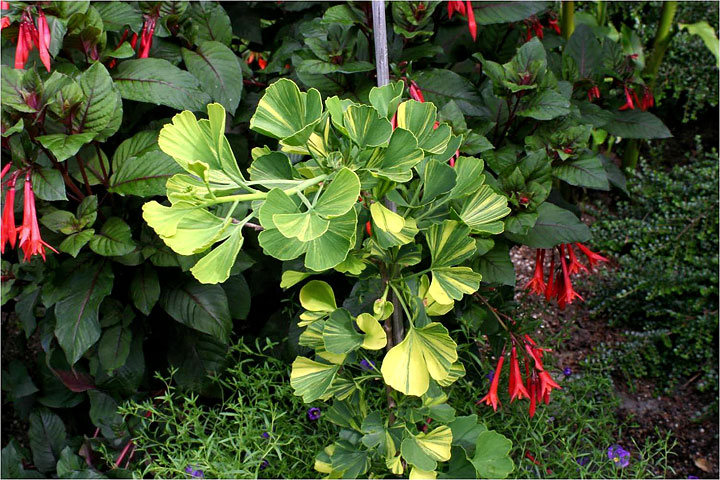
At the top of my dwarf ginkgo list would be the variety ‘Majestic Butterfly’. It is the first dwarf that I purchased, and it continually attracts the most attention from visitors. The annual rate of growth is considered 5-7 inches, so it has been very manageable. The outstanding feature of this ginkgo is the striped green and yellow variegation on the leaves, though the color can be variable. Sometimes an all-green branch will pop up, but as it goes through the season, the variegation will appear.
Another favorite is ‘Marieken’. It was discovered as a sport mutation in Holland in 1995 and is now in the retail trade. In my garden, it has a semi-prostrate growth habit. I have pruned it in such a way to encourage this habit, and it is now a spreading shrub of about 2 feet high and 6 feet wide. The leaves have wavy ruffled edges and turn brilliant gold in the fall.
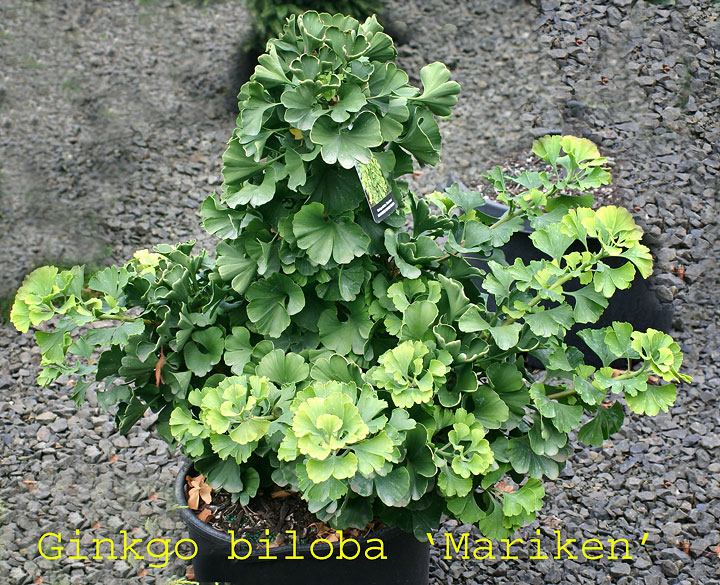
The ginkgo ‘Jade Butterfly’ has proven to be quite popular with gardeners and should be readily available at nurseries. It has dark green leaves that look similar to the wings of a butterfly. It is another excellent ginkgo for a pot, and the unusual looking leaves draw much attention. As it matures, it develops a shrubby, vase-shaped habit.
The Ginkgo’s Legacy
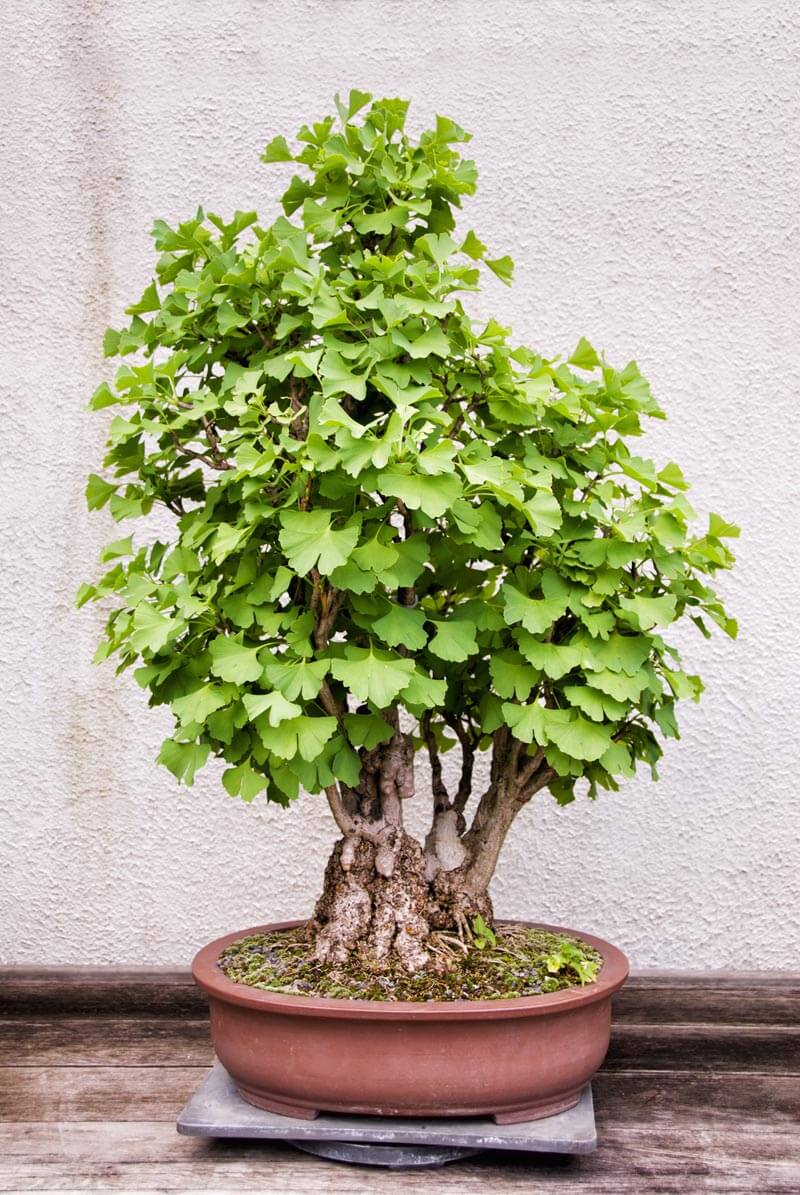
With fossils dating the ginkgo back millions of years, the endurance and survival of the ginkgo was ultimately tested when they dropped the atomic bomb on Hiroshima in 1945. Within days after the explosion, three Ginkgo trees sprouted new leaves. These trees were the closest survivors to ground zero after the atomic blast. Today they are part of the Hiroshima Peace Memorial Museum, and former Director Akihiro Takahashi summed it best when he declared that the ginkgos “expressed the endurance of hope, the need for peace and reconciliation.”

